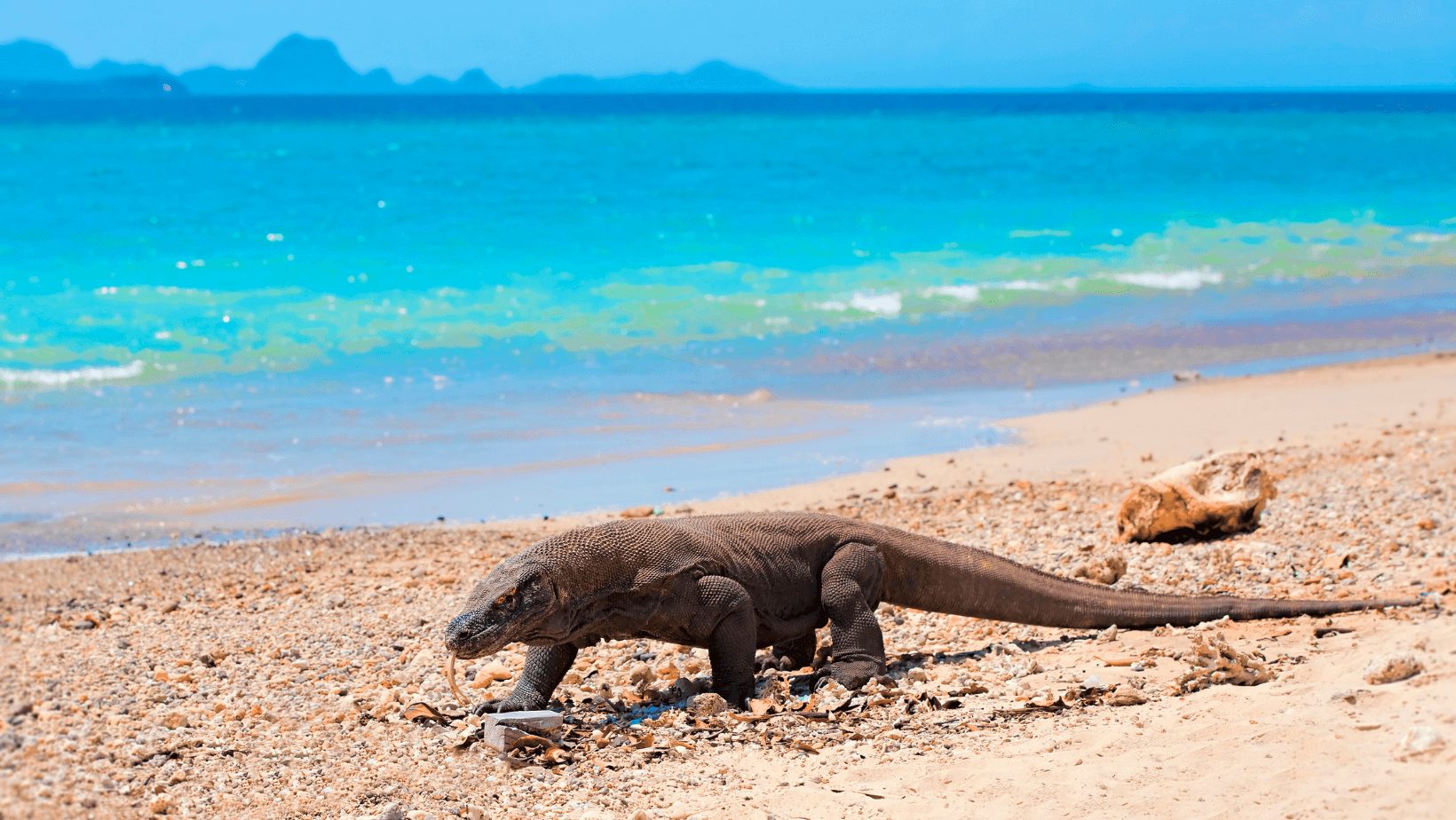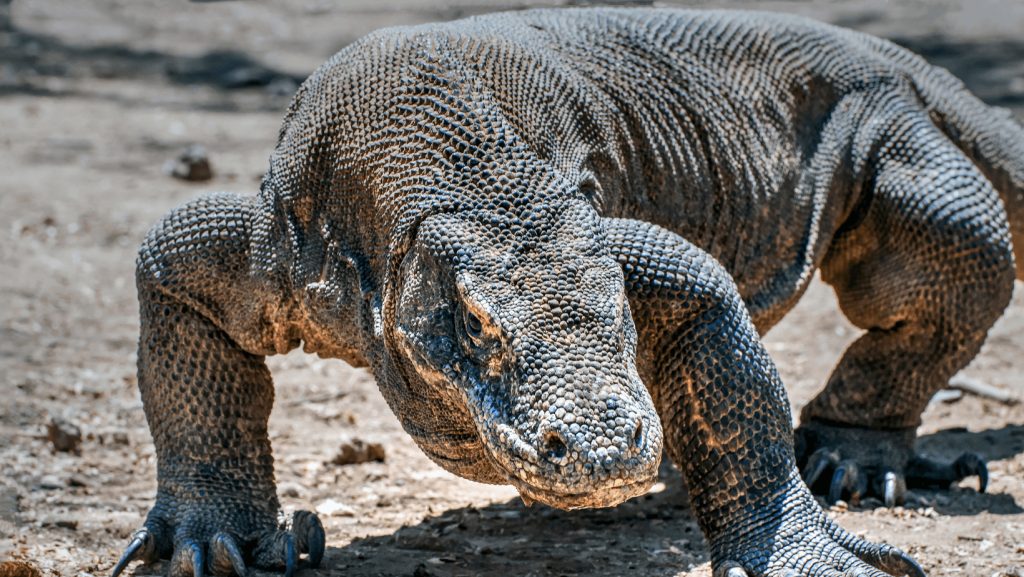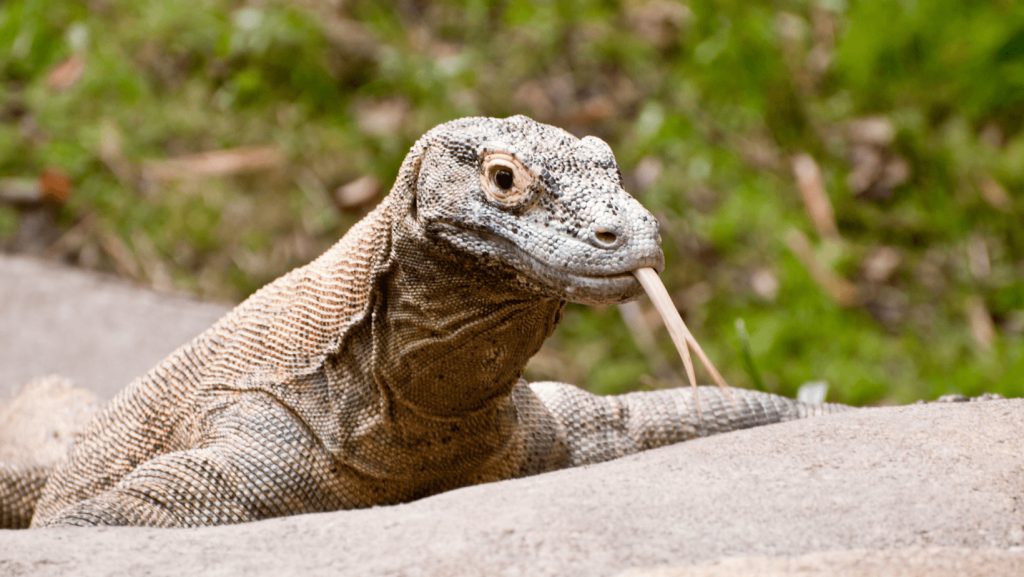
Komodo Dragon Basics
The Komodo dragon is a monitor lizard of the family Varanidae. In the wild, it’s found on Komodo Island and a few of the neighboring Lesser Sunda Islands of Indonesia. They have thrived in the tropical forests of the Indonesian islands for millions of years. While they have been known to travel up to seven miles a day, they prefer to stick close to home and rarely venture far from where they hatch.
One of the attributes that the Komodo dragon is best known for is its size. When fully grown, it can reach up to 10 feet in length and weigh more than 300 pounds. Their large size has helped drive interest in the animal and they have become an ecotourist attraction. This has encouraged the protection of the species which is currently endangered.
The Komodo dragon was placed on the endangered species list in 2021. From 1996 to 2021, the International Union for Conservation of Nature and Natural Resources (IUCN) listed the species as vulnerable. But in 2021, the IUCN listed them as endangered because climate models show that between 30% and 70% of their habitat will be lost to increases in sea level by 2040.

Dangerous Bite
Many lizard species eat plants, but the Komodo dragon is carnivorous. They mostly eat carrion but have also been known to ambush large prey, including pigs, deer, cattle, and members of their own species. On occasion, they will also attack and kill humans. They rarely capture live prey directly, as they typically attack their prey and wait for their venomous bite to kill the animal.
The venom delivered in a Komodo dragon bite contains toxins that inhibit blood clotting. It’s believed that their victims go into shock from rapid blood loss. Herpetologists note that the physical trauma of the bite and the introduction of bacteria from the lizard’s mouth also help slow and kill their prey.
To help deliver their deadly bites, Komodo dragons have 60 sharp, serrated teeth that grow up to an inch long. Lost teeth are constantly replaced, and a lizard will often go through four to five full sets of teeth in their lifetime. The teeth are designed to tear off large chunks of flesh from the prey, which is then swallowed whole. During a single feeding, a dragon can eat up to 80% of its body weight.

Komodo Dragon Threats
Despite the Komodo dragon’s dangerous nature, the species does face several serious threats to its own survival. One trait that has become both an evolutionary advantage and disadvantage to the species is its ability to reproduce asexually. While most young are produced through sexual reproduction, isolated females sometimes produce offspring through parthenogenesis.
Asexual reproduction is generally helpful for maintaining the population. However, this process only results in male offspring and the scarcity of other females has led to evidence of inbreeding. The animal’s reluctance to stray far from home intensifies the issue as the species’ population declines and fragments. This poses potential genetic threats to future generations of the species.
Humans have threatened the Komodo dragon’s survival by burning their habitat and poaching both the reptile and its prey. Tourists can also cause issues by offering food handouts and disrupting the animals’ mating process. To help with conservation efforts, Indonesia established Komodo National Park in 1980. The refuge is now recognized as a UNESCO World Heritage site. It’s home to other unique species like the orange-footed scrub fowl and Timor deer. It also includes a rich marine environment supporting whales, dolphins, sea turtles, and over 1,000 species of fish.
Weekly Trivia
Enter your guess to reveal the answer.
